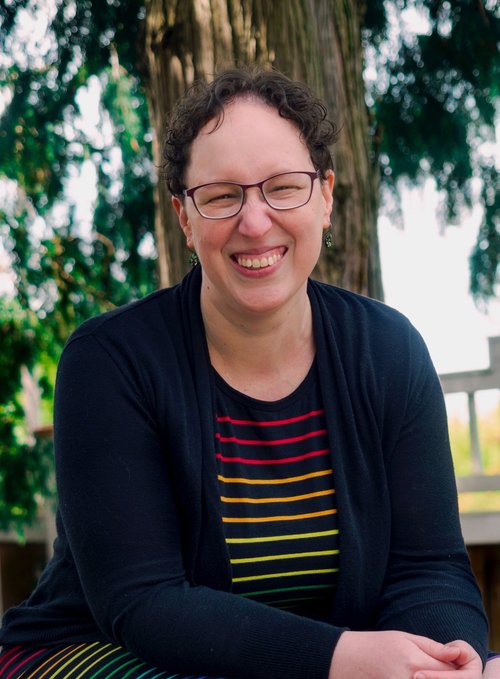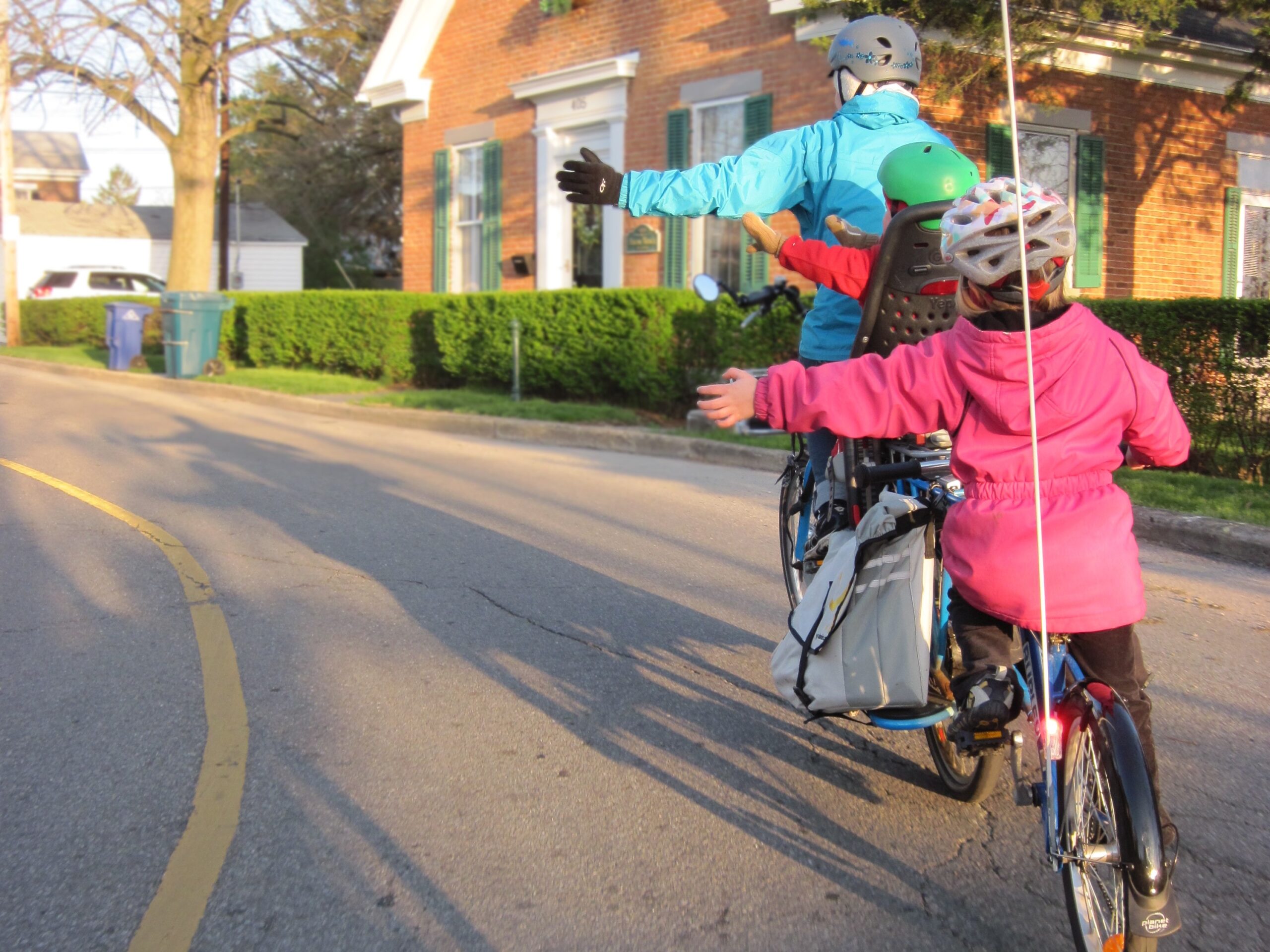We all have habits in everything we do. They’re an essential part of being human. They allow our brains to not think through every single thing we do all day long. They’re a survival mechanism. However, it’s important to question them now and then to make sure they’re serving us well, and get curious about how we might change them if they aren’t.
This is the story of a client who I’ll call C, who came to see me for one-on-one hands-on Functional Integration® (FI)® sessions. In these sessions, through a combination of gentle, non-invasive touch and verbal questions and instructions, my clients and I explore their movement habits and I help them bring awareness and new movement to blind spots in their bodies that are causing discomfort. By learning to understand those blind spots, my clients gain information and tools to let them take control of how they move so they can be more comfortable and move through the world more easily. This allows them to not rely solely on habits and make choices where there might not have been a choice before.
C has a long history of complex lower back and hip injuries, mostly on her left side, that have compounded on each other over the years. Her habit and her survival mechanism to keep moving was to dissociate from her left side. She was using that side, but without feeling it or living in it because doing so was too painful. This basically means that most of the left half of her body was one big blind spot that she couldn’t feel clearly or use easily.
(Do you have a part of your body you dissociate from, or avoid paying attention to because it’s painful? Can you imagine that happening throughout a whole side of your body?)
C and I first met in 2019, when she came to see me a few times for help with her latest left hip injury. She showed up again in my office in December 2023 when, thanks to these compounded injuries and the lack of available care during the pandemic, her left hip and back pain had become debilitating. Walking, sitting, lying down – nothing was comfortable. It had gotten so bad she had consulted a couple of orthopedic surgeons to find out if she needed surgery and their answer was yes, she needed an SI (sacroiliac) joint fusion, a rare and tricky procedure.
C had already scheduled her surgery, but was understandably scared of it and looking for ways to avoid it. Based on our previous work together, she trusted my opinion on what was going on in her body and had come back in to find out whether or not I agreed with the surgeons, and what other options I might recommend.
When a client comes in for an FI session, each Feldenkrais® practitioner has their own preferred assessment techniques. I have two favorites for clients with issues around standing and walking. One is to watch my client walk both directions around my table, where I look at their balance, coordination, and ease or lack thereof in movement. The other has my client seated on my table with their feet on the floor, where I’ll gently press through each knee into each foot and hip joint to find out how connected or not their system feels.
(Try this yourself – sit with your feet on the floor and notice your footprints. Does one feel clearer than the other? Does one make more contact with the floor than the other? Gently press one foot into the floor and notice where you feel the pressure travel through your leg, hip, and back, then repeat that with the other foot. Chances are it feels different on each side.)
C was in so much pain in December that I did not ask her to walk, but I did use the seated assessment. When I pushed gently through each side, her foot and leg felt very clear and connected, while her left side felt far away and mysterious. I had her lie on her back where I could use my hands to listen directly to her left hip, SI, and lower back without the complications of being upright. Her SI joint was so unstable that all I felt throughout her left side was chaos.
In an FI session, I’m often helping my client understand how we build habits to do things like create stability, breathe, balance, have good posture, etc, that don’t actually always help us, and how to find new habits that work better. It was clear to me that C’s system was trying to create stability but couldn’t because of her injuries, and needed some externally imposed stability through surgery before my work would be helpful. Just changing habits wouldn’t create stability in all that chaos. I told C that I agreed with her surgeons about the SI joint fusion plan.
After a few more days to think it over, C went in for surgery the following week. I saw her again a few weeks later. Sometimes surgery is the right decision, and this was definitely one of those times.
Even just a few weeks after the surgery, C’s pain had already improved so much. Shifting her weight to her left side while standing or sitting was still extremely challenging, but it was now possible for me to do my job and help her find new ways to use and live into that side.
I often think of my work in FI as map making, using my hands to bring attention to parts of my client’s map of their body that got blotted out or lost due to injury, trauma, or other non-use. After years of dissociation and protection against movement, C’s brain’s map of her left leg and foot looked like a stick and a block with no detail. Over the next few months, C and I worked together to fill in her map. I used my hands and words to help her notice parts of her foot she hadn’t been using; how easily she could bend her ankle, knee, and hip now that her SI joint was stable; how to begin to shift her weight safely to her left side. I always sent her home with something new to pay attention to that week to keep filling in that map.
By late March 2023, C had a more complete map of her left side, but was still struggling to shift her weight to the left and feel safe at the same time. We dug into the question “Can I shift my weight to the left?” and it quickly got philosophical.
While lying on her back on my table, I asked C to think “I need to shift my weight to the left” and immediately, her body froze and her pre-surgery protection habits kicked in hard. I asked her to think “I’m trying to shift my weight to the left” and the same thing happened. I then asked her to think “Can I shift my weight to the left?” and she unfroze, her protection habits got out of the way, and her movement became more fluid.
Noticing this made C laugh because of a conversation that had happened with her partner as she was leaving the house to come see me. “Have a good day!” C said, and her partner’s response was “I’ll try.” She asked him, “Try..? Do you want to have a good day?” Her partner answered “Yes, of course” and they had a brief conversation about how your attitude affects your day. She realized her body and mind were having that same conversation about her left side. How she thinks about her left side affects how she uses it.
As C was getting ready to leave my office, I suggested that she could use this same kind of questioning with her physical therapy exercises, to not push and do as many repetitions as she can or go as hard as she can, but to find out what feels safe and possible for her body on any given day. C replied, “Exercises? Oh, this will change my relationship [with my partner], not just my exercises!”
As of writing this in June 2023, I haven’t seen C since that session. I assume she’s taken these ideas and is running with them, continuing to explore her left side and her relationship on her own. She’ll come back in when she’s ready for more input.
Feldenkrais can be very hard to describe and explain because of experiences like this one. It’s not just a movement practice or a hands-on bodywork technique – it’s a life philosophy that gets us curious about ourselves and others. “Can I?” or “Can you?” is a very powerful question because it leaves room for an honest answer and kindness. For any version of this question at any moment, the answer might be an enthusiastic “Yes!”, it might be a strict “No.”, or it might be a “Maybe, but I don’t know yet.” Leaving enough room and kindness for “No.” or “Maybe…” to be valid answers, rather than pushing because we need to or should do something, is something we all need more practice at.
I’ll leave you with a quote that this part of my work makes me think of:
“I beg you, to have patience with everything unresolved in your heart and to try to love the questions themselves as if they were locked rooms or books written in a very foreign language. Don’t search for the answers, which could not be given to you now, because you would not be able to live them. And the point is to live everything. Live the questions now. Perhaps then, someday far in the future, you will gradually, without even noticing it, live your way into the answer.” – Rainer Maria Rilke, “Letters to a Young Poet”
Where could you leave more space in your relationship with your body or in other parts of your life for “Can I?” Where do you push for an instant black or white answer or rely on a habit that might not be serving you so well? What would it mean to slow down and find a different choice to make?
 About Rachel
About Rachel

